From The Movie, Chapter 65, 1981.-– J.R.
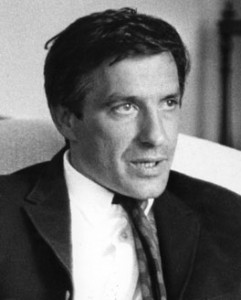
One of the most paradoxical and controversial of all the American independents, John Cassavetes has always placed actors and acting at the center of his film-making conceptions. An actor himself, he has used his craft as a means of financing his own productions — which are themselves celebrations of acting. ‘Directing really is a full-time hobby with me,’ he confessed in an interview in the late Sixties. ‘I consider myself an amateur film-maker and a professional actor.’
Born on December 9th, 1929 in New York City, the son of a Greek immigrant who made and then lost a fortune in business, Cassavetes attended Colgate College as an English major. It was there that his interest in acting was sparked, and he enrolled in the American Academy of Dramatic Arts shortly after graduation.
Delinquent turns director
Following a stage debut in a stock company and a bit part in a Hollywood feature, Fourteen Hours (1951), Cassavetes gradually acquired his reputation as a young actor by appearing in television dramas, where he specialized in juvenile delinquent parts. By the mid-Fifties, budget, he was re-creating one of these roles in a film about a family being held captive by hoodlums, The Night Holds Terror (1955). Read more
From the Chicago Reader (November 8, 1991). — J.R.
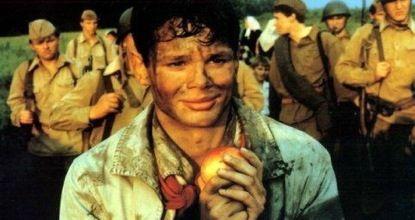
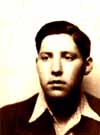
EUROPA EUROPA
**** (Masterpiece)
Directed and written by Agnieszka Holland
With Marco Hofschneider, Rene Hofschneider, Delphine Forest, Andre Wilms, Julie Delpy, and Halina Labonarska.
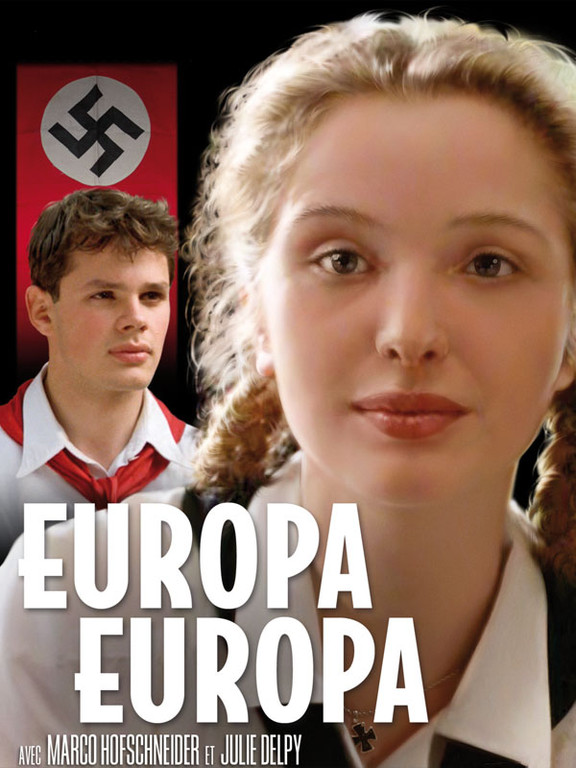
Solomon Perel was born in Peine, Germany, in 1925, the youngest child of a Polish-Jewish shoe merchant. He survived World War II first in a Soviet orphanage (1938-41), then by posing as an Aryan at the most prestigious and elite Hitler youth school in Germany. The only giveaway sign of his Jewish identity was his circumcised penis, which he had to keep hidden at all costs. (At one point, he even made an amateurish and painful surgical attempt to “uncircumcise” himself.) After the war, he emigrated to Palestine as a Jew. At the end of Europa Europa — director Agnieszka Holland’s adaptation of Perel’s autobiography — the real Solomon Perel tells us, “When I had sons, I didn’t hesitate to circumcise them.” The film concludes by showing us Perel today, at age 65, in Israel, singing a familiar Hebrew song.
But are we truly convinced of his Jewishness? On the prosaic level we certainly are: obviously Solly Perel is a Jew. But on the philosophical, meditative level established during the course of this remarkable film, we may be somewhat less certain. Read more
From the March 2, 2001 Chicago Reader. –J.R.
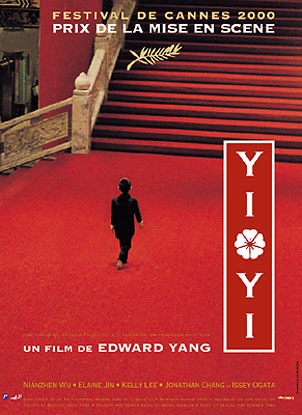
Yi Yi
****
Directed and written by Edward Yang
With Wu Nien-jen, Elaine Jin, Kelly Lee, Jonathan Chang, Issey Ogata, and Ke Suyun.
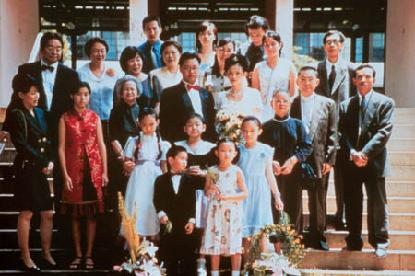
“Happy families are all alike,” begins Anna Karenina. “Every unhappy family is unhappy in its own way.” The way in which the Jians, the central family in Edward Yang’s 173-minute Yi Yi, are unhappy is difficult to pinpoint in a word or phrase, but Yang sees this father, mother, teenage daughter, eight-year-old son, and grandmother as the five fingers of a single hand, each one gradually becoming paralyzed and isolated.
Yang’s films are all set in Taipei, and only one of them, A Brighter Summer Day, isn’t contemporary. One thing that’s special about them is that they don’t coast along on the actions of a single hero or protagonist. The best of them — in descending order, A Brighter Summer Day (1991), Yi Yi (2000), Taipei Story (1985), and Mahjong (1996) — are about groups more than individuals; in A Brighter Summer Day the group is a class of high school boys in the early 60s, in Yi Yi it’s a screwed-up middle-class family in the late 90s, in Taipei Story it’s three separate troubled generations during Taiwan’s economic boom in the mid-80s, and in Mahjong it’s a dispersed pack of ailing and confused individuals in the mid-90s who are driven nuts by capitalism, or by what Yang calls “a Confucian confusion” about capitalism. Read more
From Film Comment (January-February 1975). (January 23, 2012 update: Thanks, once again, to the ever-vigilant Ehsan Khoshbakht for spotting a few typos here and thus enabling me to correct them.)– J.R.
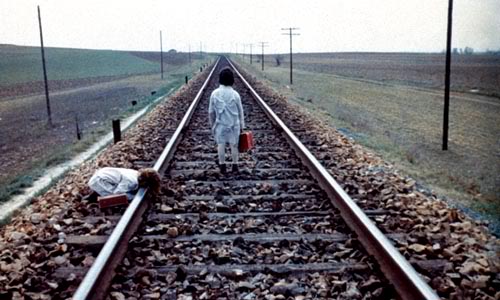
October 8: Victor Erice’s EL ESPIRITU DE LA COLMENA (THE SPIRIT OF THE BEEHIVE). I’ve been trying all weekend to come up with an adequate description of this lovely Spanish film, but I can’t get anywhere. A colleague recently spoke of the film as “beguiling,” which seems like an honest start. Two remarkably expressive little girls, Ana Torrent and Isabel Telleria, see James Whale’s FRANKENSTEIN at a traveling film show that stops in their village in Castille. Afterwards, Isabel explains to her sister that the monster is still alive — and indeed, he makes a brief appearance in the final reel. The girls’ father is a bee-keeper who broods over Maeterlinck, while the mother writes unexplained letters to someone in France. Isabel plays dead for a bit, and Ana believes her. Ana befriends a fugitive soldier who is eventually killed.
I don’t know what sense to make of either the plot or Erice’s beautiful honey-tone colors and honeycomb compositions, but I find the film haunting and rather spellbinding in a muted way, and emotionally it all seems to add up to something. Read more
From the April 3, 1998 Chicago Reader. My affection for Richard Linklater’s most underrated film has only grown over time. — J.R.
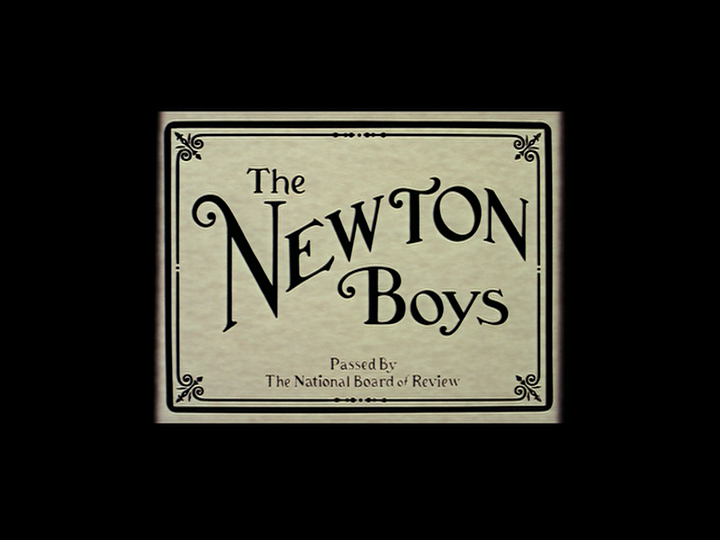
The Newton Boys
Rating *** A must see
Directed by Richard Linklater
Written by Linklater, Claude Stanush, and Clark Lee Walker
With Matthew McConaughey, Skeet Ulrich, Ethan Hawke, Dwight Yoakam, Julianna Margulies, Vincent D’Onofrio, and Chloe Webb.
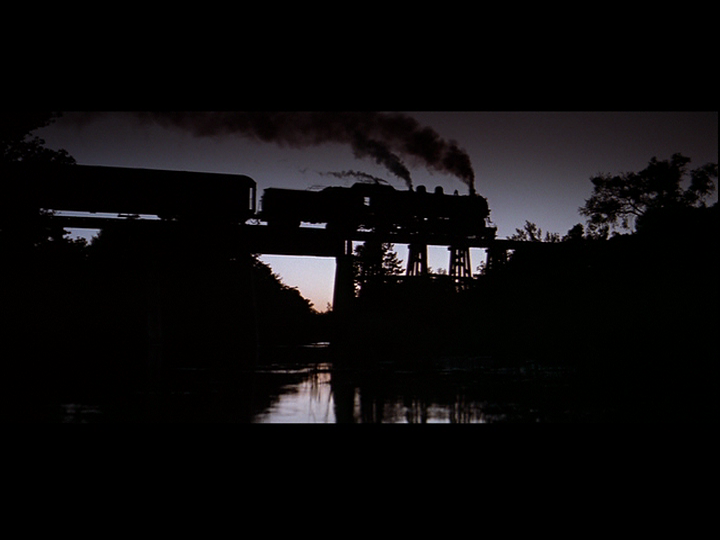
Shortly before reseeing Richard Linklater’s sixth feature, The Newton Boys, I caught up with his first — a Super-8 opus from 1988 with the enigmatic title It’s Impossible to Learn to Plow by Reading Books [see below]. Essentially an epic of inaction starring Linklater himself, the movie consists mainly of hanging out, taking train rides, driving, using a variety of vending machines, doing household chores, and watching movies on TV. The film might be described as a noncommercial version of his second feature, the 1991 Slacker — a Slacker without much dialogue or plot, devoted to the everyday pleasures of vegetating and drifting. Some of it reminds me of structural films and of the work of Jon Jost. Just about all of it is attractively shot. And Linklater’s film references — including choice bits from the sound tracks of The Killing and Some Came Running and an extended ravishing clip from Gertrud — pop up like generous, unexpected gifts. Read more
From the Chicago Reader, January 15, 1993. — J.R.

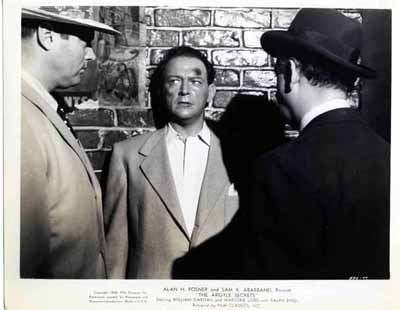
INFLATION
*** (A must-see)
Directed by Cyril Endfield
Written by Endfield, Gene Piller, Michael Simmons, E. Maurice Adler, and Julius Harmon
With Edward Arnold, Horace McNally, Esther Williams, and Vicky Lane.
THE ARGYLE SECRETS
*** (A must-see)
Directed and written by Cyril Endfield
With William Gargan, Marjorie Lord, Ralph Byrd, Jack Reitzen, John Banner, Barbara Billingsley, Alex Fraser, George Anderson, Mary Tarcai, and Kenneth Greenwald.
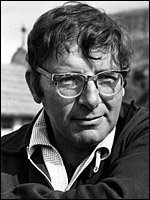
It’s a virtual truism that rewriting history entails — and to some extent derives from — rethinking the present moment. Just as the recent change in presidents can be linked to the public’s revised reading of the last 4 (or 8 or 12) years, our highly selective sense of film history is determined not only by which films have survived but also by the present-day concerns that dictate what interests us about the past.
Illustrations of this principle can be found in three separate programs showing this week at the Film Center. The first two are part of an invaluable series, “Romanov Twilight: Early Russian Cinema,” running throughout this month. I haven’t previewed the films for these programs — Yakov Protazanov’s two-part Satan Triumphant (1917) on Saturday at 4:30 and Evgenii Bauer’s Yuri Nagorny (1916) and V. Read more
From Written By: The Journal of the Writers Guild of America, West (March 1998, Vol. 2, issue 3).
The first photograph here was taken during the summer of 1987, when I was the director of the Film Studies summer school program at the University of California, Santa Barbara and invited Sam Fuller to serve as our Artist in Residence. –- J.R.


Many film lovers of my generation were introduced to him in an early party sequence in Jean-Luc Godard’s already unruly Pierrot le Fou (1965), playing himself and smoking his signature cigar-a short, wiry firecracker ready to hold forth. Asked by Jean-Paul Belmondo what cinema was, he said it was like a battleground: “Love. . .hate. . . action. . .violence. . .death. In a word, emotion.”
By the time the writer-director-legend Samuel Fuller died in Hollywood last October at age 86, his reputation as the last two of these hyphenates was fully in place. Celebrated for his gritty noirs, unglamorous war films, and eccentric westerns, he also turned up in bit parts in everything from The American Friend to 1941. Yet the fact that he’s still better known as a director and as a juicy screen presence than as a writer seriously distorts the meaning of his life and career. Read more
From the April 1, 1993 Chicago Reader. — J.R.

Michelangelo Antonioni’s sexy art-house hit of 1966, which played a substantial role in putting swinging London on the map, follows a day in the life of a young fashion photographer (David Hemmings) who discovers, after blowing up his photos of a couple glimpsed in a park, that he may have inadvertently uncovered a murder. Part erotic thriller (with significant glamorous roles played by Vanessa Redgrave, Sarah Miles, Verushka, and Jane Birkin), part exotic travelogue (featuring a Yardbirds concert, antiwar demonstrations, street mimes, one exuberant orgy, and a certain amount of pot), this is so ravishing to look at (the colors all seem newly minted) and pleasurable to follow (the enigmas are usually more teasing than worrying) that you’re likely to excuse the metaphysical pretensions — which become prevalent only at the very end — and go with the 60s flow, just as the original audiences did. 111 min. (JR)

 Read more
Read more
This book review appeared in the December 14, 1984 issue of the Los Angeles Reader. For more on Wurlitzer, readers are invited to check out my reviews of Walker and Candy Mountain in the Chicago Reader, both available on this site, as well as a more comprehensive piece about his work as a novelist and screenwriter, published in Written By. — J.R.
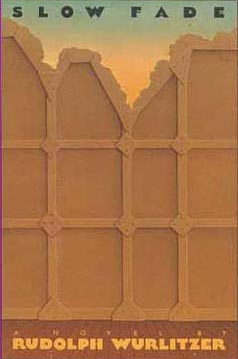
Slow Fade
By Rudolph Wurlitzer
Alfred A. Knopf: $13.95
By Jonathan Rosenbaum
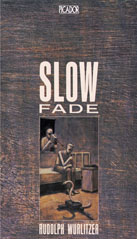
The difference between the art novel and the Hollywood novel can be as vast as the reaches between the East coast and the West coast, and any effort to wed the two in a shotgun marriage is liable to blow up in one’s face. Slow Fade, while an exceptionally and deceptively easy read, is far from being an easy book — which is one of the best things about it. That’s probably what Michael Herr means by “dangerous” in his jacket-blurb patter: “Slow Fade comes out of the space between real life and the movies and closes it up for good. A great book: beautiful, funny, and dangerous.” Any novel that begins with one character losing an eye and ends up with another losing his index finger is bound to be fraught with scary Oedipal tensions, and Slow Fade goes out of its way to make the most out of them. Read more
As I recall, this article, published in the November 2, 1990 issue of the Chicago Reader, had two immediate consequences for me. The first was that the late Gene Siskel, an acquaintance of mine from press screenings, refused to speak to me for several years, and I was no longer able to attend any more press screenings in Chicago held mainly for him and Roger Ebert. The second was that on November 11, when Rouch appeared at the Film Center, he publicly thanked me for my article, which I don’t believe had ever happened to me before with a filmmaker. So one might say that I lost an acquaintance (at least until Gene decided to forgive me several years later, after I attended a tribute to him and Roger at the Music Box) and gained a friend. —J.R.
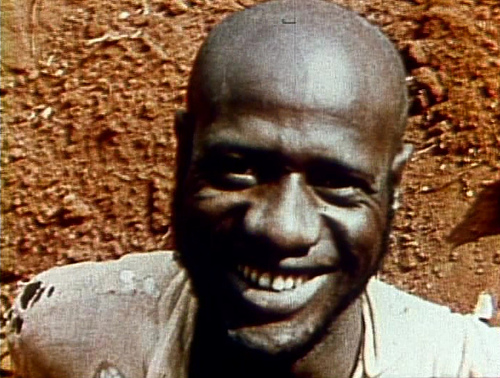

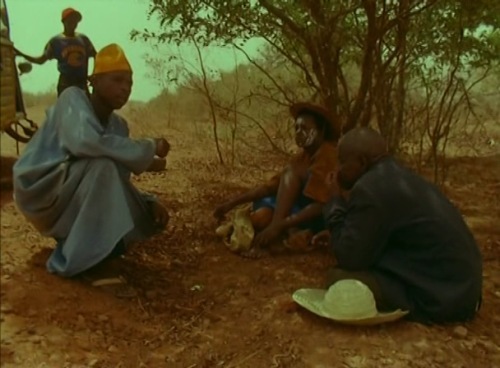
LES MAÎTRES FOUS
**** (Masterpiece)
Directed by Jean Rouch.
THE LION HUNTERS
*** (A must-see)
Directed by Jean Rouch
With Tahirou Koro, Wangari Moussa, Belebia Hamadou, Ausseini Dembo, Sidiko Ko ro, and Ali the apprentice.
JAGUAR
**** (Masterpiece)
Directed by Jean Rouch
With Damoure Zika, Lam Ibrahim Dia, and Illo Gaoudel.
Anthropologists of the year 2090 — if humanity still exists and is still sufficiently divided, sufficiently colonialist and hierarchical, to need anthropologists — may look with wonder at that revealing artifact of late-20th-century multinational capitalism, the American newspaper. Read more
From the December 24, 1999 issue of the Chicago Reader. — J.R.
Ten Best Movies of the 90s

(not including but with notes on Cradle Will Rock)
Does one’s integrity ever lie in what he is not able to do? I think that usually it does, for free will does not mean one will, but many wills conflicting in one man. Freedom cannot be conceived simply. It is a mystery and one which a novel, even a comic novel, can only be asked to deepen. — From the preface to Flannery O’Connor’s Wise Blood
A lot of havoc is wreaked by the usual annual ten-best lists. For starters, there’s the hard-sell behavior of publicists trying to get critics to see every major year-end release before December 31, even though most of these features won’t open in Chicago until at least January. This results in two time frames — one for national releases and another for local releases — which confuses everyone. If you play by the rules of the Chicago Film Critics Association (which should really be called the Chicago Film Publicists Association), you’re encouraged to act like a publicist and promote features on your ten-best list that haven’t opened in Chicago — but you’re strictly forbidden to act like a critic and review any of them. Read more
From the Chicago Reader (May 7, 1993). — J.R.
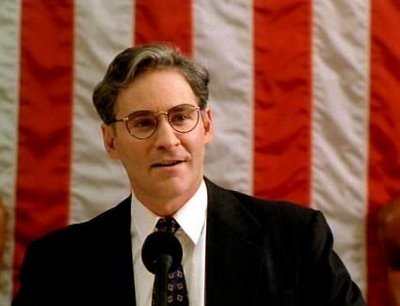
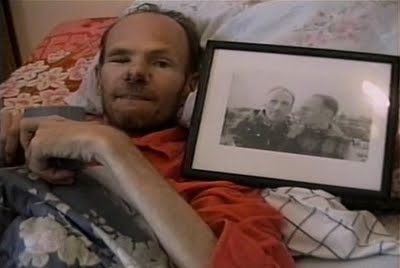
DAVE
** (Worth seeing)
Directed by Ivan Reitman
Written by Gary Ross
With Kevin Kline, Sigourney Weaver, Frank Langella, Kevin Dunn, Ving Rhames, and Ben Kingsley
SILVERLAKE LIFE: THE VIEW FROM HERE
**** (Masterpiece)
Directed by Tom Joslin and Peter Friedman
With Tom Joslin, Mark Massi, Charles and Mary Joslin, Whitey and Sue Joslin, and Lois Black Hill.
Is it the prime purpose of every movie we want to see to tell us comforting lies? On some level I suspect it is, and paradoxically this may be the case even with pictures that supposedly break through reassuring deceptions to give us the unvarnished truth. One way or another, even the best of films tend to deceive us about certain matters — and if they didn’t, we probably wouldn’t give them the time of day.
The two recent examples I have in mind are in other respects about as different as movies can be. With a skillful piece of Hollywood pastry like Dave, an Ivan Reitman comedy about a small-time businessman named Dave (Kevin Kline) impersonating the U.S. president (Kline as well), one might at first be drawn in by its refreshing candor about the ignobility of the office of president. Read more
On October 14, 2012 I received the sad news from Pierre Bayle d’Autrange that his longtime partner Eduardo de Gregorio, also a longtime friend of mine (since 1973), died Saturday night at the St. Louis Hospital in Paris, not long after his 70th birthday.
I wrote the following for the festival catalogue of the Buenos Aires Festival of Independent Film in 2004, to accompany a retrospective of Eduardo’s films — as far as I know, the only such retrospective that was ever held. It is also reprinted — along with a short essay of the same length on Sara Driver (also the subject of a BAFICI retrospective that year)– in “Two Neglected Filmmakers,” a piece included in my most recent collection, Goodbye Cinema, Hello Cinephilia as well as here. — J.R.
Eduardo de Gregorio’s Dream Door

It must be a bummer to be an Argentinian writer and/or filmmaker and constantly get linked to Jorge Luis Borges. It must be especially hard if you’re Eduardo de Gregorio, whose first major screen credit is on an adaptation of “Theme of the Traitor and Hero” for Bernardo Bertolucci’s 1970 feature The Spider’s Strategm.
I don’t mean to question the credentials of de Gregorio as a onetime student of Borges — just the appropriateness of a too-narrow understanding to impose on a singular body of work that owes as much to cinematic references as to literary ones, and one that indeed juxtaposes the two almost as freely as it juxtaposes different languages and historical periods (while including all the cultural baggage that comes with each of them). Read more
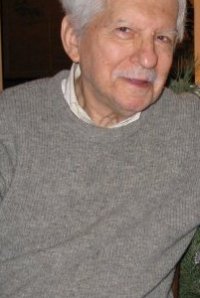
I can’t remember precisely when it was that I first met Elliott in Paris, but I’m sure it was in the early 70s, and I suspect it was the late Carlos Clarens, another Cinematheque regular, who introduced us, most likely after some Palais de Chaillot screening. It wasn’t much later when I discovered we were neighbors living a few blocks apart — me in a small, sunless flat on Rue Mazarine, Elliott in a large room stuffed with all sorts of arcane memorabilia at the Hotel de Verneuil on Rue de Verneuil. He was already a pack-rat then, especially when it came to his collection of clippings, and he continued to live that way years later when he eventually moved back to New York — first to a hotel on lower 5th Avenue, then to a roomy loft in Soho on West Broadway. It was a tragic moment for him when he had to move out of the latter place, leaving behind or giving up many of his treasured possessions (including, as I recall, a table once owned by Robert Ryan). And only a few days ago, at the Viennale, hearing about the ravages of Sandy on New York and environs, my friends and I were concerned about whether or not Elliott was okay. Read more
From the November 11, 1994 Chicago Reader. — J.R.

*** OLEANNA
(A must-see)
Directed and written by David Mamet
With William H. Macy and Debra Eisenstadt.
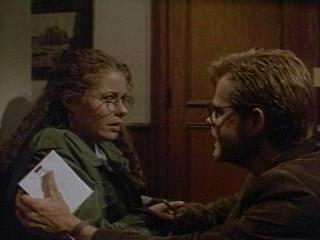
David Mamet’s four features to date, none of them realistic, are all concerned to a greater or lesser extent with con games. Ultimately what one thinks of any of them has a lot to do with which side of the con one winds up on — which proves to be a matter of how one relates to the style as well as the content. Language is the major instrument of both seduction and deception in these films, and Mamet’s stylized use of it, playing on its ellipses and ambiguities as well as its more abstract and musical qualities, often deceives and seduces the audience. So how one responds to these characters has a lot to do with how one reacts to these language games.
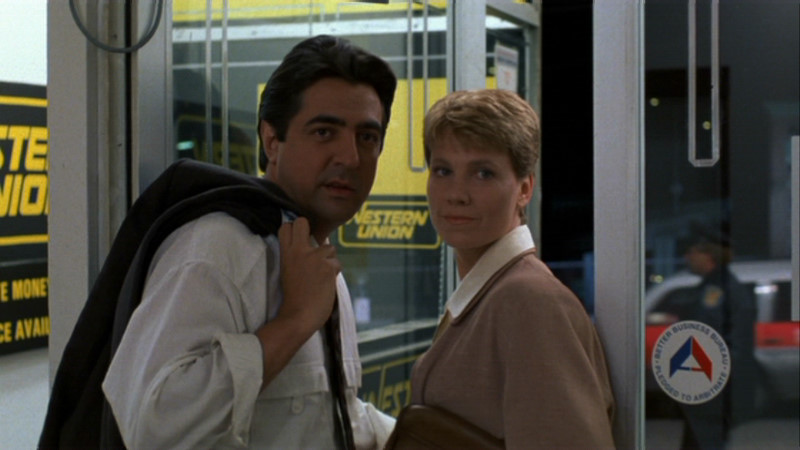
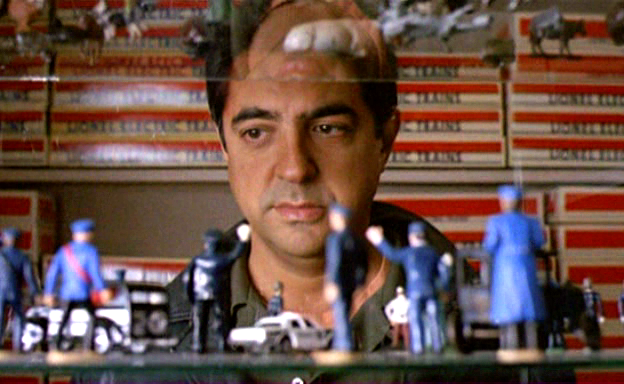
To my mind, House of Games and the first half of Things Change are seductive (if brittle) fantasies about the allure and danger of spinning seductive fantasies; the second half of Things Change and Homicide are outsized sentimental bluffs. All three films star Joe Mantegna, are about criminals, and bear some relation to Hollywood genres; but where one places one’s trust and emotional allegiances is different in each case. Read more
































